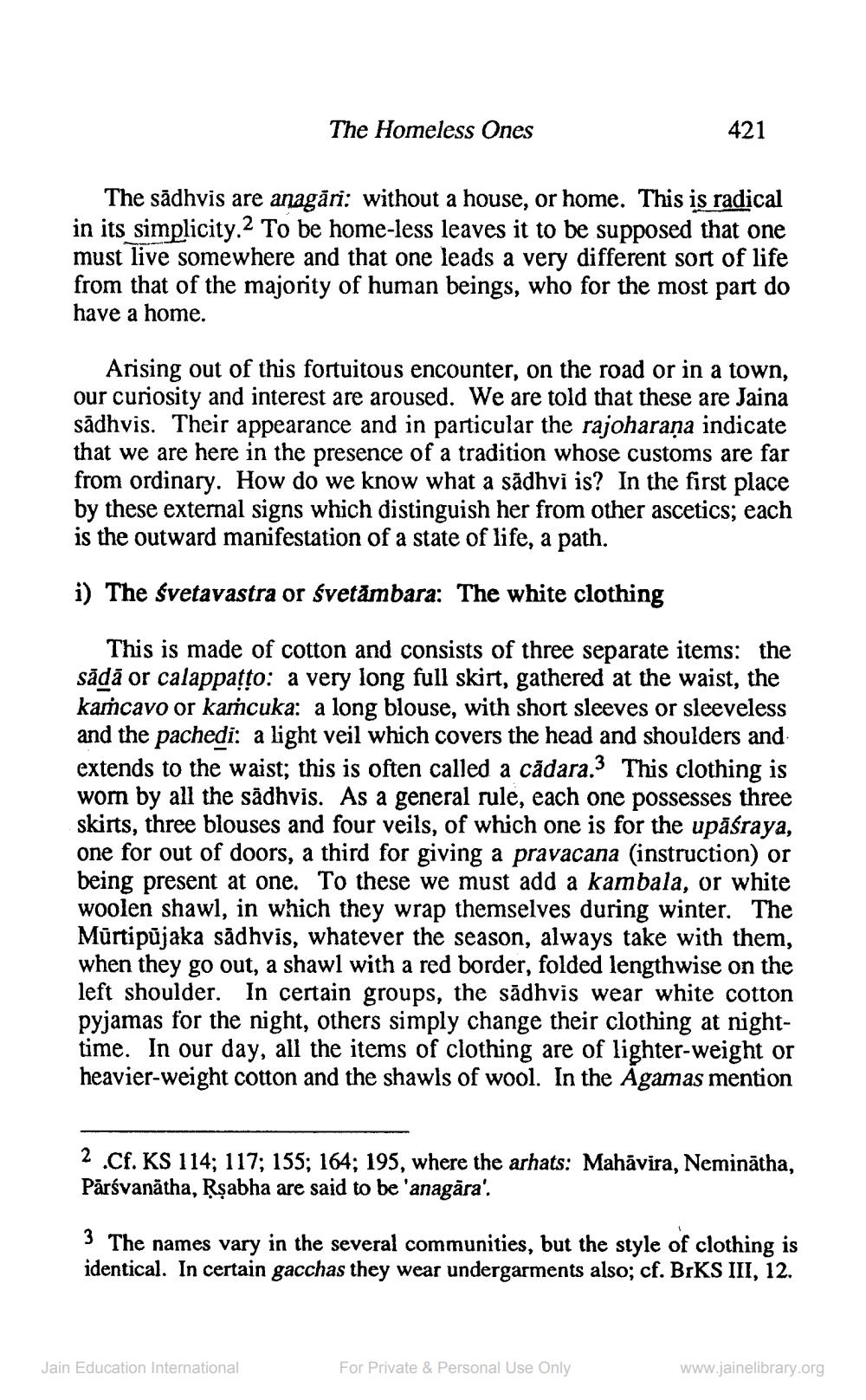________________
The Homeless Ones
421
The sādhvis are anagāri: without a house, or home. This is radical in its simplicity. To be home-less leaves it to be supposed that one must live somewhere and that one leads a very different sort of life from that of the majority of human beings, who for the most part do have a home.
Arising out of this fortuitous encounter, on the road or in a town, our curiosity and interest are aroused. We are told that these are Jaina sādhvis. Their appearance and in particular the rajoharana indicate that we are here in the presence of a tradition whose customs are far from ordinary. How do we know what a sădhvi is? In the first place by these external signs which distinguish her from other ascetics; each is the outward manifestation of a state of life, a path.
i) The svetavastra or svetāmbara: The white clothing
This is made of cotton and consists of three separate items: the sādā or calappatto: a very long full skirt, gathered at the waist, the kamcavo or kaṁcuka: a long blouse, with short sleeves or sleeveless and the pachedi: a light veil which covers the head and shoulders and extends to the waist; this is often called a cădara.3 This clothing is worn by all the sadhvis. As a general rule, each one possesses three skirts, three blouses and four veils, of which one is for the upăśraya, one for out of doors, a third for giving a pravacana (instruction) or being present at one. To these we must add a kambala, or white woolen shawl, in which they wrap themselves during winter. The Mūrtipūjaka sådhvis, whatever the season, always take with them, when they go out, a shawl with a red border, folded lengthwise on the left shoulder. In certain groups, the sādhvis wear white cotton pyjamas for the night, others simply change their clothing at nighttime. In our day, all the items of clothing are of lighter-weight or heavier-weight cotton and the shawls of wool. In the Agamas mention
2 .Cf. KS 114; 117; 155; 164; 195, where the arhats: Mahāvira, Neminātha, Pārsvanātha, Rşabha are said to be 'anagära'.
3 The names vary in the several communities, but the style of clothing is identical. In certain gacchas they wear undergarments also; cf. BrKS III, 12.
Jain Education International
For Private & Personal Use Only
www.jainelibrary.org




